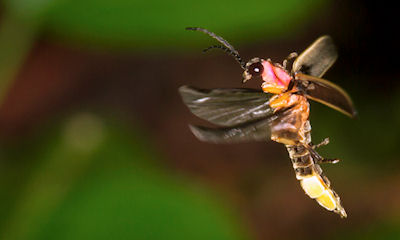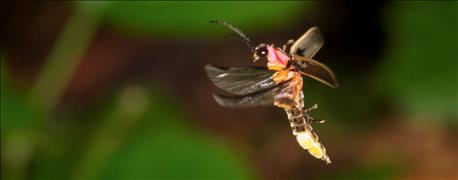
Tom Turpin got people's attention many years ago, long before you could control rootworms with GMO traits, when he proclaimed that corn rootworm hatch roughly correlates to appearance of lightning bugs in late spring or early summer.
Related: Using a soil insecticide alongside corn rootworm traits is not advised
Turpin is a Purdue University entomologist, famous for cockroach races at the Indiana State Fair, eating mealworms and being a past Honorary Master Farmer.

Coming soon! Both lightning bugs and corn rootworm larvae will be out soon. (Ivkuzmin/Thinkstock.com)
Some may have thought it was one of his famous pranks. However, John Obermeyer, another Purdue entomologist, says there is actually a good correlation between when lightning bugs appear and when you can start finding rootworm larvae in corn fields. The correlation likely hinges on the fact that both respond to heat units accumulated over time to reach a certain stage in development where they make an appearance.
So I was quite surprised last week, on May 24 to be exact, when sitting on the back porch with my wife, Carla, and daughter, Kayla, Kayla insisted she saw a lightning bug. I was looking the other way, naturally, and didn't see it, if there was one.
Her eyes are better than mine anyway, so I assume there was one.
It's been a relatively cool spring. Surely lightning bugs weren't out yet. That would mean, if Turpin is right, that corn rootworm larvae could be hatching too.
Obermeyer offers a possible explanation where everyone could be right. "There are two kinds of lightning bugs," he says. "One is more commonly found in wooded or wet areas. If you put the adults side by side, the one found in those places is smaller than the one found in fields."
The caveat is that the one found in woods and wet areas comes out much earlier, Obermeyer notes. Our house and barn lot are full of trees. So is it possible Kayla saw one of the "other" kind of lightning bugs? Possibly. Obermeyer says that from a distance, they would appear very similar.
Related: Why Western corn rootworm is so tough to control
At any rate, both "real" lightning bugs and corn rootworm larvae will be appearing soon. They are likely to appear first in southern and central counties in Indiana. Keep an eye out for both.
About the Author(s)
You May Also Like




